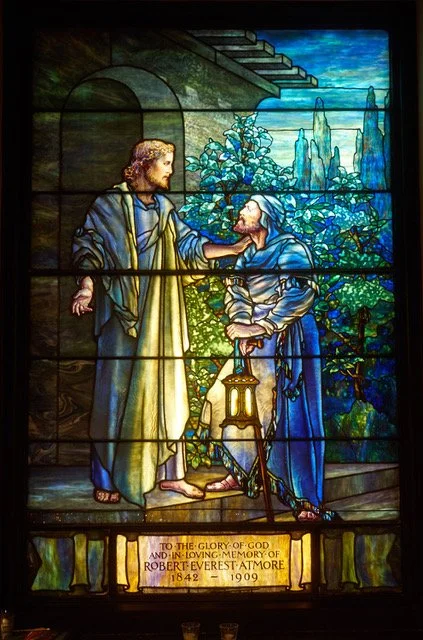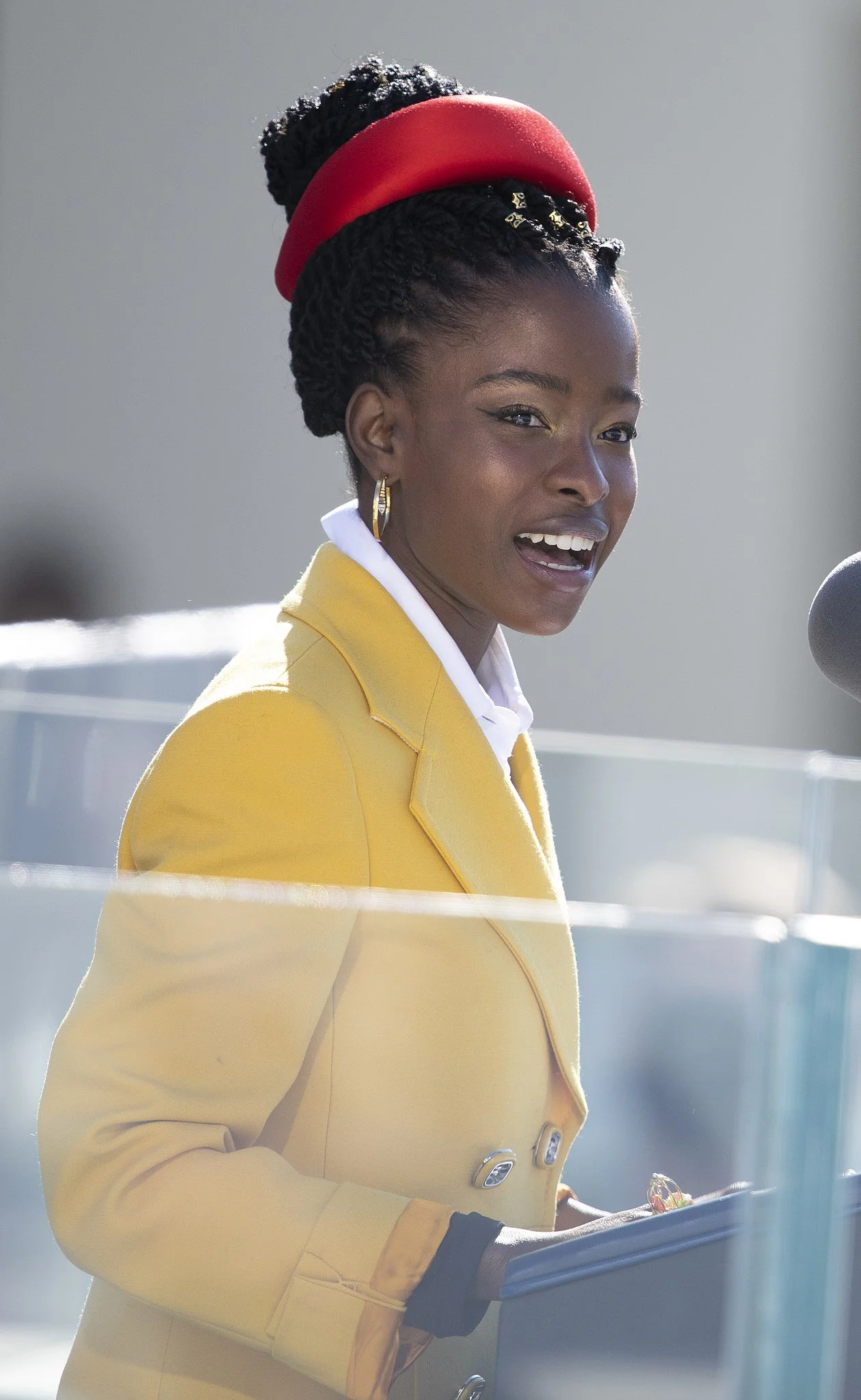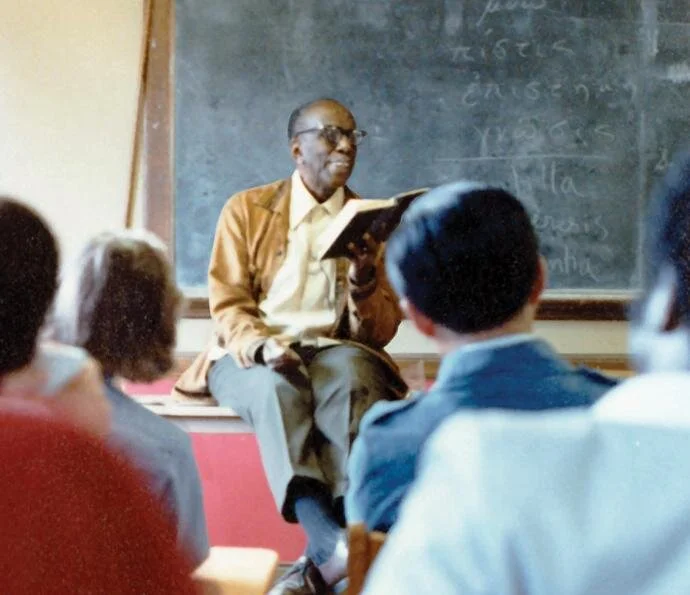Personal journeys in spirituality, faith, and Church I—African American contralto Marian Anderson (1897-1993)
Conductor Arturo Toscanini famously applauded the voice of contralto Marian Anderson (1897-1993) as one that came along “once in a hundred years.” She was also a remarkable American civil rights pioneer, the first African American to perform at the Metropolitan Opera (1955). She was a reformer by dignified example and engagement, not by confrontation or preaching. Her extraordinary gift and presence—regal yet modest, whole-heartedly THERE—moved others, especially those in power, to “part the waters” for her and those who followed. She acknowledged her place in the civil rights movement humbly, according to her nephew, the late conductor James DePreist (1936-2013), who remarked:
“She saw herself neither as victim nor heroine, simply as an artist who happened to be crossing an intersection of United States history when racism collided with conscience” (DePreist, Foreword, Marian Anderson: My Lord, What a Morning, 2002 edition, xiii).
DePreist’s portrayal is crucial. Marian Anderson was above all an artist: that’s how she viewed herself and how she engaged with the world, through music.
Marian the musician fused all elements that interest me here. She claimed her faith was “the only ground on which I stand”—and sing: “Whatever is in my voice, my faith has put it there” (Marian Anderson on the Power of Faith, 1954, Guideposts.org). That faith in turn nourished an interplay with spirituality and the Church that was so strong and complementary that all three elements virtually merged. Marian stands alone among my four examples for this presence and interaction of all three elements as positive forces.
Their birth and growth began at home.
Nurturing the Inner Life at Home
Marian Anderson grew up in the warmth of the extended family of her father (John Berkley Anderson), many of whom lived in the same house, through repeated moves, in South Philadelphia. When her father tragically died at age 38, her mother Annie brought Marian and her younger sisters Alyce and Ethel to live for a few years with the Andersons. The nuclear family, however, grew especially close in both adversity and joy, living and working together throughout life.
The Anderson women: Marian (center), Annie (top), Ethel (left), and Alyce (right), 1910
Marian publicly acknowledged her special devotion and debt to her mother: “Mother’s presence runs through everything I ever wanted to be” (Anderson 1954).
Annie’s example was foundational for Marian. Annie’s faith, according to DePreist (pp. ix-x) who lived with the family as a child, shaped her own force of character; quiet, compassionate authority; and humility. Working at menial jobs to support her daughters when John died, Annie’s refusal to complain or criticize others defined Marian’s approach to the outside world and particularly to racism. Annie’s argument: “‘never abuse those who abuse you. Bear them no malice and theirs will disappear’” (Anderson 1954). Annie’s guide was Jesus in his humility and courtesy even to opponents.
Marian’s choice to emulate the non-confrontational Annie becomes all the more noteworthy when compared to that of her sister Alyce, an energetic activist in Democratic politics,
Annie’s Jesus Christ was also divine companion to whom to pray, the cornerstone of her own practice as a Protestant Christian (about which more below). It was also her standard for the private spiritual life that she taught Marian, Alyce, and Ethel. The group bedtime prayers that Annie led blossomed into what, for Marian, became vital private interaction with God.
When Marian considered quitting after a poor performance with negative reviews early in her career, Annie suggested she think and pray before deciding. In so doing, Marian found solace in divine companionship despite her determination to be self-sufficient. As she prayed, she felt there was “someone to whom I could pour out the greatest need of my heart and soul. It did not matter if He answered. It was enough to pray” (Anderson 2002, 98-9).
Her voice in song readily became prayer as sung conversation and companionship with God, as we’ll see.
Marian’s prayer extended to her treasured home life when not on tour: the humble dailiness of domesticity (sewing, cooking, gardening) nourished this intensely private woman who’d performed easily in public since childhood. Her high standards for family life, modeled on her own, caused her to forego the much-wanted children with Orpheus (King) Fisher (1900-1986), her husband of 40 years, at the peak of her career (Anderson 2002, 292). Her nephews, including Jim (James DePreist), became their joy.
What about the Church?
Marian Anderson and her husband
Marian Anderson’s Church was community to praise God together and to help each other in daily life. There was, however, no one Church (or religion) in the extended Anderson family. Annie was a practicing Methodist. Marian’s father, like his mother and sister, attended the Union Baptist Church, whose second and third locations were always near their homes. Marian’s grandfather attended synagogue as a “black” Jew.
Annie, Marian claimed, downplayed denomination for “what was in one’s heart.” (Anderson 1954). Annie was nonetheless bemused when her daughters chose their father’s Union Baptist Church, which drew all three into the world of music. This congregation was famous for its choir and supporting its exceptional voices.
Though Marian, Alyce, and Ethel all sang in the junior choir and became noted singers as adults, Marian catapulted into the limelight early as the “Baby Contralto.” The congregation secured concerts for “their” Marian through Church, YMCA, and community networks, and helped with travel and apparel costs. They further found and helped to pay for private voice teachers when she, as a “colored,” was denied academic training.
Marian never forgot and built on their example. She returned repeatedly to visit former neighbors and to sing in the choir. She also established a scholarship fund for emerging singers, administered by sister Alyce, with the $10,000 from the Bok Prize that Philadelphia awarded her in 1943.
Where Did Music Fit In?
As mentioned at the outset, music pulled everything together for Marian Anderson. When singing, her voice and the words that it conveyed, regardless of the category of song, carried her joy, gratitude, and connection with life, community, and the divine. She particularly loved spirituals, however: “truly spiritual in quality, they gave forth the aura of faith, simplicity, humility, and hope” (NYT, 9 April 1993). Whether sung by a group or individual, spirituals were a form of prayer, especially when addressed to God, like “My Lord, What a Morning,” the title of her 1956 autobiography. Her immersion in her music when singing had an uncanny effect on the audience. DePreist claims people regularly approached him to marvel that her singing seemed to come from their [my italics] emotional center (DePreist, xi).
Strangers, communities, and the divine thus bonded in her singing. To approximate that experience, I close with the video of her 1953 televised performance of a joyous spiritual I showed earlier. Watching her as she sings before a live audience, with the magic of the close-up camera, for me the video bears witness to the spirituality and faith that move this artist.
—Suzanne Glover Lindsay, St. Stephen’s historian and curator









